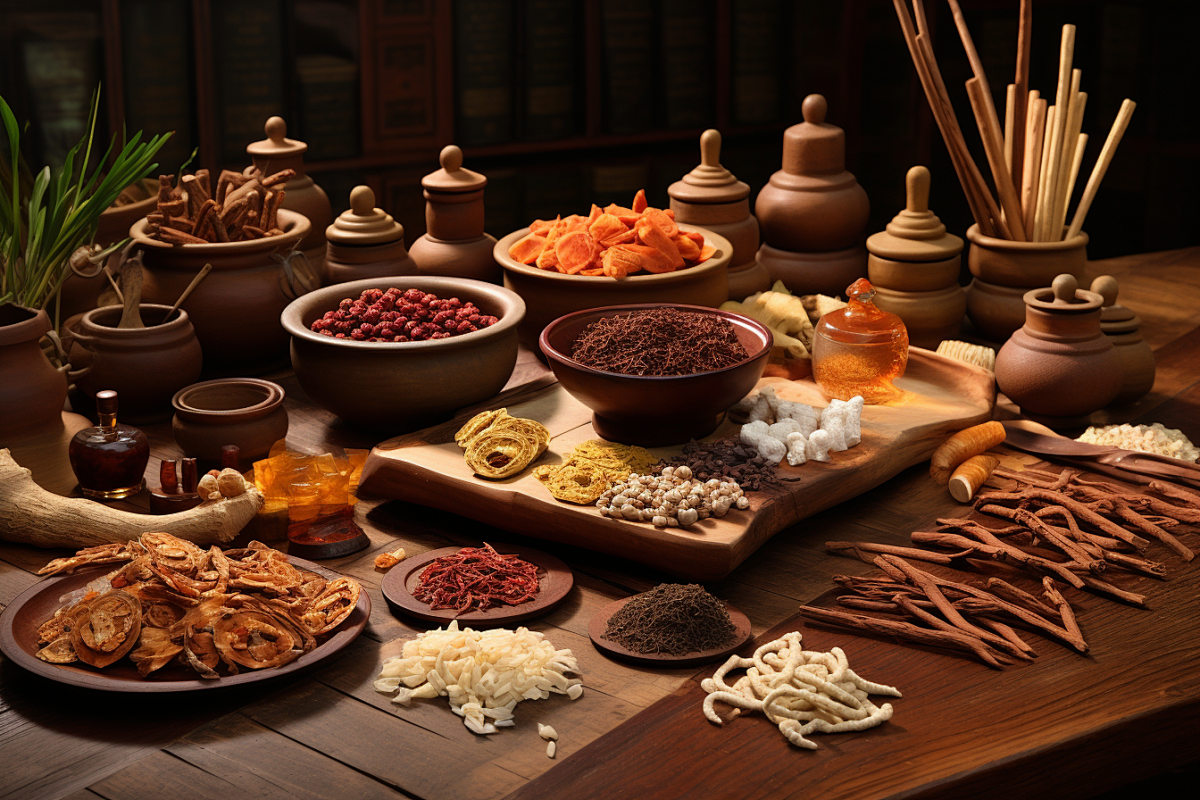Bridging Tradition and Modernity
Subtitle: Exploring Ancient Wisdom for Holistic Wellness
Medicinal herbs are treasures of Chinese civilization, embodying millennia of healing wisdom. This article introduces over 30 herbs used in TCM and artisanal wellness bracelets, highlighting their therapeutic properties, cultural significance, and modern applications.
1. Mind-Enhancing & Spirit-Reviving Herbs
- Benzoin (安息香 – Ān Xī Xiāng)
- Benefits: Awakens mental clarity, promotes blood circulation, and relieves pain. Traditionally used for stroke recovery and wound healing.
- Origin: Resin from Southeast Asian Styrax trees, aged for years before medicinal use.
- Note: Avoid for those with excessive internal heat (yin deficiency).
- Borneol (龙脑 – Lóng Nǎo)
- Benefits: Clears heat, detoxifies, and revitalizes the mind. Modern use: Key ingredient in emergency formulas like Suxiao Jiuxin Wan (Quick-Acting Heart Relief Pills).
2. Qi-Regulating & Blood-Activating Herbs
- Agarwood (沉香 – Chén Xiāng)
- Benefits: Relieves pain, warms the stomach, and combats nausea. Prized for its rich aroma and density (sinks in water).
- Dried Tangerine Peel (陈皮 – Chén Pí)
- Benefits: Aids digestion, reduces phlegm. Popular in desserts like red bean soup for its harmonizing properties.
- Costus Root (木香 – Mù Xiāng)
- Benefits: Alleviates gastrointestinal discomfort. Often paired with Amomum (砂仁) for enhanced effects.
3. Tonic Herbs for Vitality
- Astragalus (黄芪 – Huáng Qí)
- Benefits: Boosts immunity and energy. Modern studies confirm its immune-enhancing polysaccharides.
- Chinese Angelica (当归 – Dāng Guī)
- Benefits: Nourishes blood, regulates menstruation. A star in TCM’s “Four Substances Decoction” for women’s health.
- Osmanthus (桂花 – Guì Huā)
- Benefits: Warms the body, eases coughs. Osmanthus tea is a fragrant remedy for cold-induced stomachaches.
4. Aromatic Herbs for Holistic Balance
- Clove (丁香 – Dīng Xiāng)
- Benefits: Relieves hiccups and warms the kidneys. Caution: Avoid during pregnancy.
- Sandalwood (檀香 – Tán Xiāng)
- Benefits: Calms the heart and mind. Sacred in Buddhist rituals for its meditative scent.
5. Herbal Bracelets: Where Culture Meets Wellness
Cultural Roots
- Imperial Legacy: Qing Dynasty empresses wore agarwood bracelets for both elegance and health.
- Silk Road Heritage: Merchants carried herb beads as portable remedies, burnable or chewable in emergencies.
